Best Perl Reference Guides to Buy in December 2025
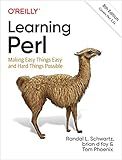
Learning Perl: Making Easy Things Easy and Hard Things Possible


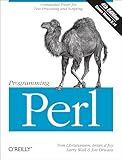
Programming Perl: Unmatched power for text processing and scripting
- QUALITY ASSURANCE: RELIABLE USED BOOKS, THOROUGHLY INSPECTED FOR QUALITY.
- COST-EFFECTIVE: AFFORDABLE PRICES FOR GREAT READS-SAVE MONEY TODAY!
- ECO-FRIENDLY CHOICE: SUPPORT SUSTAINABILITY BY BUYING PRE-LOVED BOOKS.


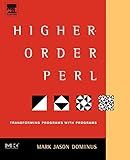
Higher-Order Perl: Transforming Programs with Programs


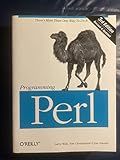
Programming Perl (3rd Edition)
- AFFORDABLE PRICES FOR QUALITY READS-GREAT VALUE FOR BUDGET SHOPPERS!
- ECO-FRIENDLY CHOICE-SUPPORT RECYCLING BY BUYING USED BOOKS!
- THOROUGHLY INSPECTED-ENSURE RELIABLE QUALITY AND ENJOYMENT GUARANTEED!



Perl Pocket Reference: Programming Tools
- AFFORDABLE PRICES FOR QUALITY READS; SAVE BIG ON YOUR NEXT BOOK!
- ECO-FRIENDLY CHOICE: REDUCE WASTE BY BUYING USED BOOKS TODAY.
- UNIQUE FINDS: DISCOVER RARE TITLES AND HIDDEN GEMS AT GREAT DEALS!


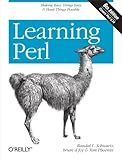
Learning Perl
- QUALITY ASSURANCE: EACH BOOK IS INSPECTED FOR GOOD CONDITION.
- ECO-FRIENDLY CHOICE: SAVE MONEY AND TREES WITH RECYCLED BOOKS.
- UNIQUE SELECTION: DISCOVER RARE FINDS AND HIDDEN LITERARY GEMS.


Perl, a high-level, general-purpose programming language, remains relevant in 2025 for its power and flexibility. One of the fundamental features that contribute to its enduring utility is “references.” Understanding how Perl references work enhances your ability to manipulate complex data structures, making your code more efficient and scalable.
Understanding Perl References
References are a scalar data type in Perl that allows you to create complex data structures like arrays of arrays, hashes of hashes, or even more intricate arrangements. Essentially, a reference is a pointer that holds the memory address of another value. This capability is crucial for building complex software applications, especially when managing large datasets or creating dynamic functionality.
Why Use References?
- Memory Efficiency: References reduce memory usage by allowing multiple variables to access the same data without duplicating it.
- Dynamic Data Structures: Easily create and manipulate complex data structures like nested arrays and hashes.
- Simplified Code: References simplify code readability and maintainability by allowing for more concise syntax when dealing with multi-dimensional structures.
How to Create References
Creating a reference in Perl is straightforward. Here’s a basic example:
# Array Reference my @array = (1, 2, 3); my $array_ref = \@array;
Hash Reference
my %hash = (key1 => 'value1', key2 => 'value2'); my $hash_ref = \%hash;
Scalar Reference
my $scalar = 10; my $scalar_ref = \$scalar;
In the above examples, the backslash (\) operator is used to create a reference to the respective data structure.
Dereferencing in Perl
Dereferencing is the process of accessing the data from a reference. You can dereference Perl references by using the variables like normal but adding a @, %, or $ to signify an array, hash, or scalar, respectively.
# Dereferencing array my @dereferenced_array = @$array_ref;
Dereferencing hash
my %dereferenced_hash = %$hash_ref;
Dereferencing scalar
my $dereferenced_scalar = $$scalar_ref;
Syntax Tip
When dereferencing, using the -> operator can simplify reference operations, making accessing elements more intuitive, like $array_ref->[0] for the first element of an array reference or $hash_ref->{key1} for a hash.
Advanced Usage of References
2025 sees further sophistication in network management and interoperability tasks in Perl, often employing references. For more technical insights into using Perl in networking, consider exploring network monitoring in Perl. Additionally, there’s smooth integration of Perl with other platforms like passing variables from PowerShell to Perl, which can be explored further here.
Nested Data Structures
Using references, you can create complex, nested data structures, such as arrays of hashes or hashes of arrays, providing powerful capabilities for handling sophisticated data layouts.
# Array of Hashes my $array_of_hashes_ref = [ { name => 'Alice', age => 30 }, { name => 'Bob', age => 32 } ];
Hash of Arrays
my $hash_of_arrays_ref = { group1 => [1, 2, 3], group2 => [4, 5, 6] };
Conclusion
Understanding and effectively using Perl references allows developers in 2025 to write more efficient and flexible code. Whether you’re managing complex data structures, optimizing network operations, or integrating with other scripts and technologies, mastering references is essential.
As the need for robust, scalable solutions grows, so will the importance of these foundational skills. For a lighter topic, unrelated but useful in 2025, you may also find interest in how to properly inflate an exercise ball.
Harness the full power of Perl with references, and unlock new possibilities for your software development projects!
